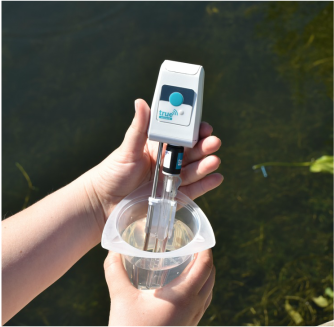How does temperature affect pH?
19 January 2017
19 January 2017
When measuring pH it’s important to also measure the temperature of the solution, as pH varies greatly with temperature.
Many pH meters have a separate temperature sensor and Automatic Temperature Compensation (or “ATC”) built in to help with this.
But how does pH change with temperature?
And why does temperature have such a great effect on pH?
We’ve taken a look at the theory behind the pH and temperature relationship below.

There are two ways in which temperature affects pH readings – by affecting the electrode, and by affecting the sample (or solution) being measured.
ATC systems help to account for changes in the electrode, but changes in the sample are a real variation due to chemical activity. This means it is important to consider temperature changes even if your meter has ATC built in.
Temperature affects on the electrode can be further categorized into 3 main areas. All relate to how real life electrode response varies from the theoretical ideals.
Electrode Slope effects
The theoretical and ideal electrode response is defined by the Nernst equation, which includes a temperature term.
As this relationship between electrode response and temperature is constant (the Nernst equation remains the same in any pH test) the way the electrode responds in different temperatures can be fully accounted for by ATC systems.
If you are using an electrode and temperature probe, and your meter has Automatic Temperature Compensation, your readings will be adjusted automatically to account for this change.
Isothermal Point effects
For an ideal electrode, plots of pH vs mV taken at different temperatures would all intersect at pH 7.00 and 0 mV. In reality these plots intersect at different points for each electrode (see graph below)

This can cause differences in the displayed pH reading, and the effect is made worse if calibration and sample tests are performed at very different temperatures. The change can be as great as 0.1 pH.
ATC systems cannot correct for this affect, so it is best to avoid conditions that cause Isothermal Point effects completely. This means calibrating and measuring samples at the same temperature, or as close in temperature as possible.
For extremely high accuracy work, using a water bath to bring both calibration buffers and samples to exactly the same temperature avoids this effect. For most general work, simply having buffers and samples in the same conditions (e.g. both in the room, or both in the fridge) will suffice to control this affect.Electrode Response Time effects
Since the solubility of internal salts in an electrode changes with temperature, and the resistance of the membrane glass changes with temperature, the response time of the electrode changes with temperature too.
This effect is generally overcome by selecting an electrode which is right for the task – most electrodes will state a minimum and maximum operating temperature, and these should be adhered to.
As well as changing the electrode, temperature differences can change the sample too.
Every sample will have a particular relationship between pH and temperature, expressed with a temperature co-efficient. However this is different for every sample, so it is difficult to compensate for it.
For example, a sample tested at 25°C may show a reading of pH 14.00, but when the exact same sample is heated to 60°C it could change by as much as 1 pH unit.
The effect is generally greater in alkaline or basic solutions than in acidic solutions.
The only way to compensate for this is to again ensure calibration buffers and samples are all tested at the same (or very close) temperatures.
Overall we have seen;
If you have any other questions about pH that you would like us to explore in our future blog posts, just leave us a comment below or contact us to discuss your application